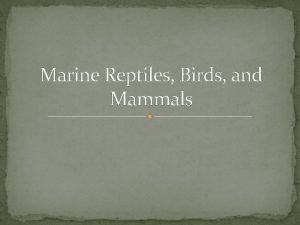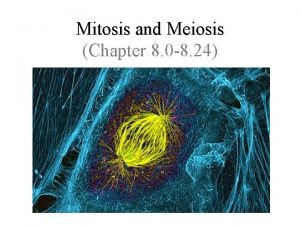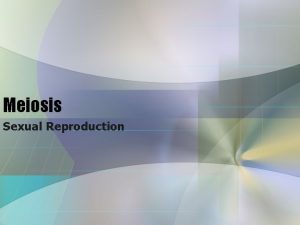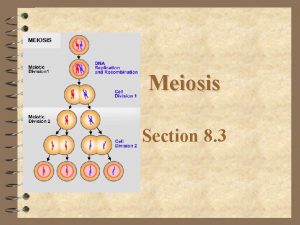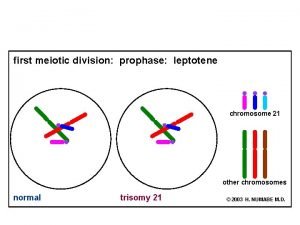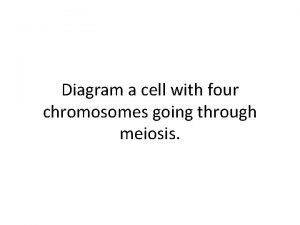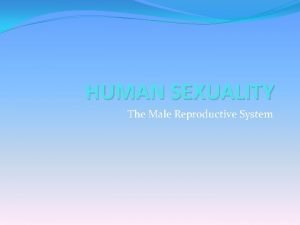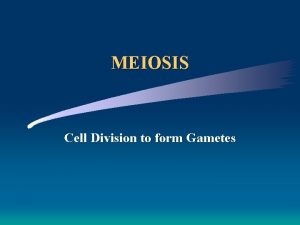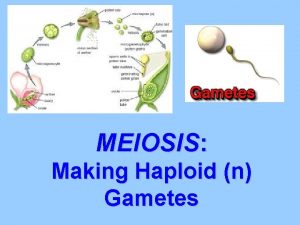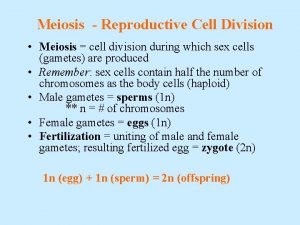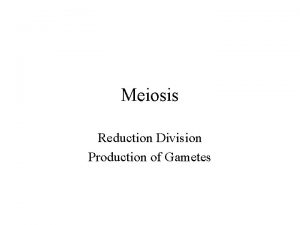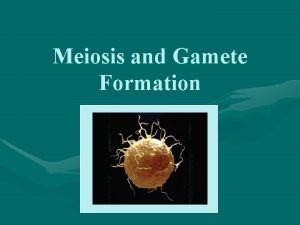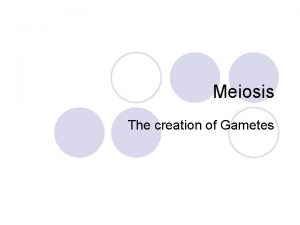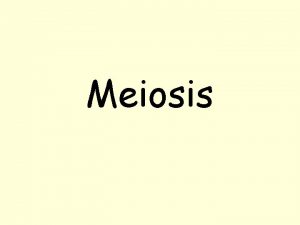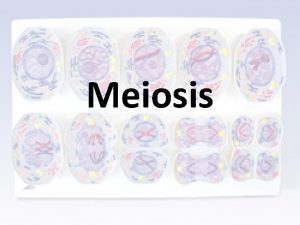Meiosis Cell division to form the gametes sperm











- Slides: 11

Meiosis • • Cell division to form the gametes, sperm (male gamete) and egg (female gamete). Characteristic of eukaryotes only: not in prokaryotes. • Normal cells are diploid: 2 copies of every gene. • Gametes are haploid: 1 copy of every gene • Meiosis allows a sex cell to be formed with 1 copy of each gene randomly assigned. Why have sexual reproduction? Shuffling of alleles between parents and offspring leads to new combinations. Bad combinations die without reproducing; good combinations survive and reproduce more offspring. •

Overview • Start with a diploid cell, with 2 copies of each chromosome, one • In Meiosis I, the one cell divides into two going from 4 n to 2 n. • In Meiosis II, two cells divide into four cells going from 2 n (diploid) to n (haploid)

Meiosis 1 • An important event occurs during meiosis 1: crossing over in prophase, . § Crossing over § chromosomal segments are exchanged between a pair of homologous chromosomes. § This creates new combinations of the alleles on each chromosome. Results in mixing of the genes you inherited from your parents.

Chapter 10 Sexual Reproduction and Genetics 10. 1 Meiosis Provides Variation § Depending on how the chromosomes line up at the equator, four gametes with four different combinations of chromosomes can result. § Genetic variation also is produced during crossing over and during fertilization, when gametes randomly combine.

Chapter 10 Sexual Reproduction and Genetics Review Sexual Reproduction v. Asexual Reproduction § Asexual reproduction § The organism inherits all of its chromosomes from a single parent. § The new individual is genetically identical to its parent. § Sexual reproduction § Beneficial genes multiply faster over time.

Chapter 11 Complex Inheritance and Human Heredity § Karyotype—micrograph in which the pairs of homologous chromosomes are arranged in numberical order.

Sexual Reproduction and Genetics 10. 3 Gene Linkage and Polyploidy occurs in cells and organisms when there are more than two homologous sets of chromosomes. . § A triploid organism, for instance, would be designated 3 n, which means that it has three complete sets of chromosomes. § Triploidy occurs in about 2 -3% of all human pregnancies and ~15% of miscarriages

Chapter 11 Complex Inheritance and Human Heredity 11. 3 Chromosomes and Human Heredity Nondisjunction § Cell division during which sister chromatids fail to separate properly

Chapter 11 Complex Inheritance and Human Heredity 11. 3 Chromosomes and Human Heredity Nondisjunction § Cell division during which sister chromatids fail to separate properly § Down syndrome or trisomy 21 is a chromosomal disorder caused by the presence of all or part of an extra 21 st chromosome

Chapter 10 Sexual Reproduction and Genetics Meiosis Down syndrome is usually the result of an error at meiosis when an egg or sperm cell gets an extra chromosome 21. Errors at meiosis occur more often in the egg cell as women get older. The chances of having a baby with Down syndrome rises from about one in 1400 in women under the age of 25, to one in a 100 by age 40.

Chapter 10 Sexual Reproduction and Genetics Meiosis - mutations Genetic mutations are changes to the sequence of genetic material of an organism. Mutations create variation within the gene pool. Less favorable mutations can be reduced in frequency in the gene pool by natural selection, while more favorable mutations may accumulate and result in adaptive evolutionary changes. For example, a butterfly may produce offspring with new mutations. The majority of these mutations will have no effect; but one might change the color of one of the butterfly's offspring, making it harder (or easier) for predators to see. If this color change is advantageous, the chance of this butterfly surviving and producing its own offspring are a little better, and over time the number of butterflies with this mutation may form a larger percentage of the population.
